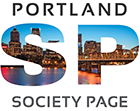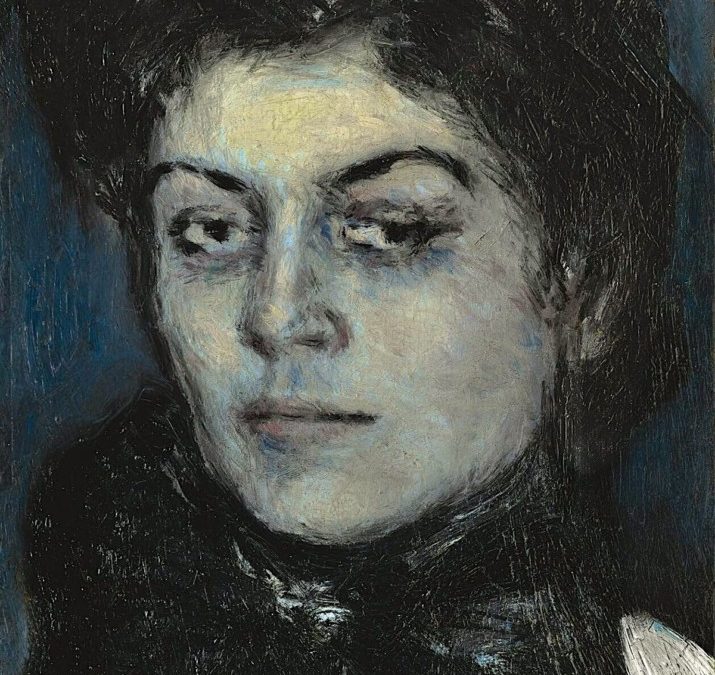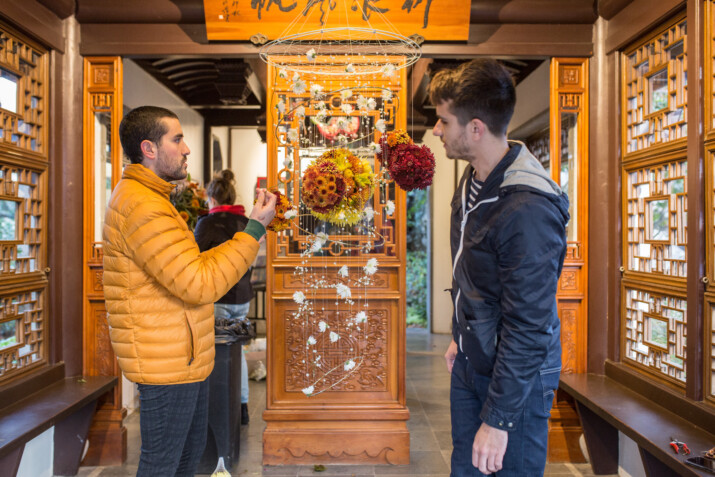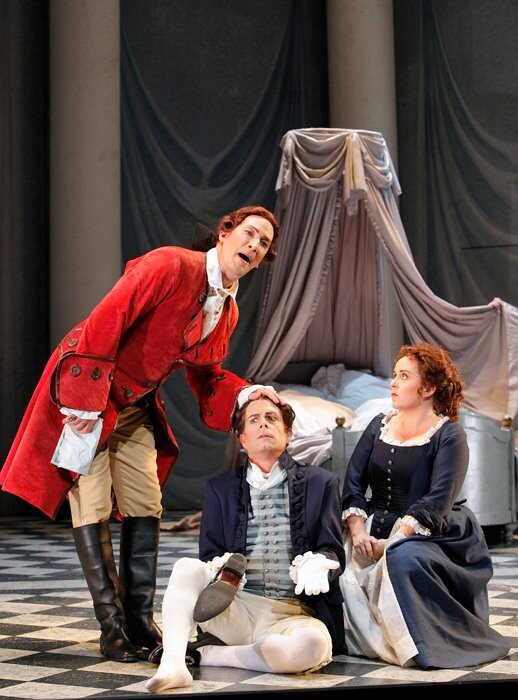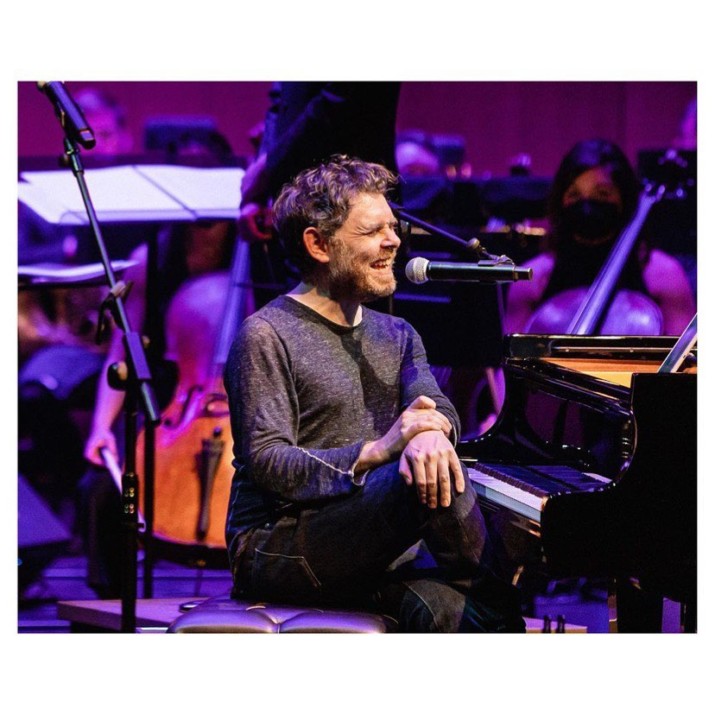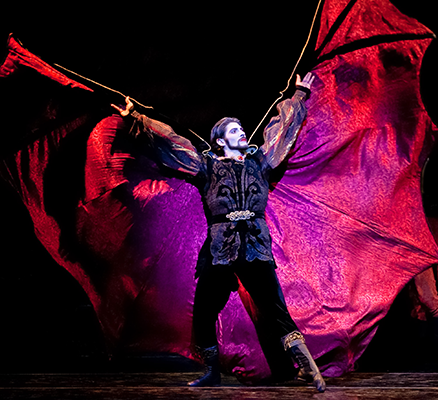Portland, OR. The Portland Art Museum (PAM) has some new art on-loan to display this fall. One notable offering is Pablo Picasso’s, Portrait of Lola, The Artist’s Sister. This painting (seen above) suggests how much the twenty-year-old artist rapidly assimilated and innovated upon the techniques of his predecessors and peers.
About the painting:
Maria Dolores Ruiz Picasso was called Lola by her family. Picasso drew and painted his younger sister many times while he was an adolescent and teenager. This work on loan captures Lola at seventeen years old in 1901, the year that marks the beginning of Picasso’s famous “blue period.” The portrait shares the somber mood and cool colors that characterize that first mature body of work, created over a brief, three-year period. It retains some of the realism that Picasso-the-student would have observed and admired in paintings at Madrid’s Prado Museum by Spanish court painters Diego Velazquez and El Greco. He merges this influence with the stylistic trends of Impressionist and Post-Impressionist artists that he would have seen on his first trip to Paris in 1900.
Another standout is an early painting by the German expressionist painter Max Beckmann, Die Barke (The Skiff) which is on view now at PAM.
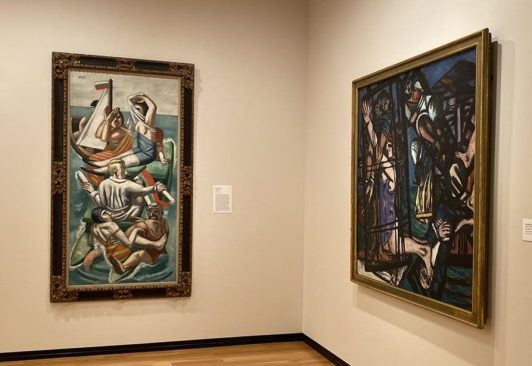
Throughout his career, Beckmann painted the sea as a subject matter full of allusion and symbolism. The artist often drew from his own life experiences to create images conveying life’s triumphs and great tragedies. Die Barke (The Skiff, seen on the left) depicts a vivacious party rowing out on calm waters.
In late 1925, Beckmann and his wife Quappi traveled from their home in Frankfurt, Germany to Italy for their honeymoon; the bright color palette and sensuous figures seem to reflect this time of love, promise and pleasure. The Skiff is hanging next to The Mill (1947), a fixture in the Mary Beth and Roger Burpee Gallery. The pair form a compelling contrast. In the 1940s during World War II, the Beckmanns fled to Amsterdam to escape the Nazi regime. In The Mill, the artist depicted people tied to a Dutch windmill and crowded into a cage with a dark green sea churning in the background, serving as a vivid reminder of the destruction and trauma of years just past.
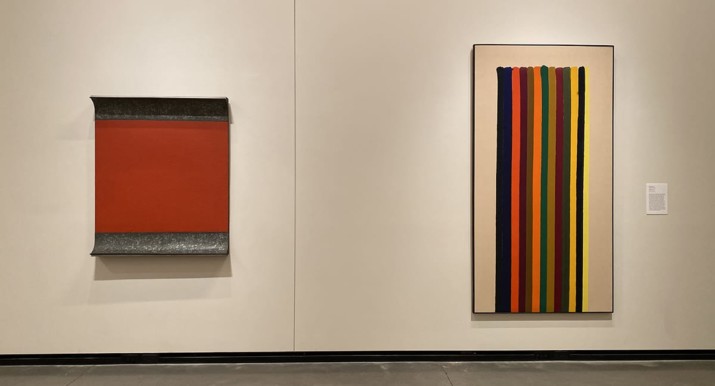
Two very special works on loan are now on view in the Jubitz Center’s Schnitzer/Novack Gallery on the second floor: Morris Louis, Number 38 and Donald Judd, Untitled (DSS 25).
Both paintings date to 1962, and this unique opportunity offers insight into a significant year for each artist. Number 38 is Louis’s final “stripe” painting made in the last year of his life. It demonstrates his masterful control over the process of staining raw canvas with diluted paint. The Museum’s collection is rich in other color field painters, and visitors will see a range of works created with this process hanging near this piece. The Judd wall-mounted work is one of his earliest “specific objects,” a phrase he used to describe his works that were neither painting or sculpture, yet contained elements of both mediums. While Judd came to be regarded as the master of minimalism, this work reinforces his attention to the expressive qualities of industrial materials. The pairing shows how artists took different paths but still moved away from illusionism and the representational in art in the early 1960s, forging the experiments in stripped-down abstraction that characterize Modern art in mid-century America.
From Portland Art Museum:
Welcome, we are excited to see you. We have been thoughtfully planning for our reopening under the guidelines set forth by the Oregon Health Authority and Centers for Disease Control. This planning has been a thorough process that considered many variables and included connecting with medical professionals, government officials, and peer institutions across the city and country. We’ve studied our facilities and infrastructure to understand what’s possible in this time of social distancing and made changes to best serve our staff and public in the safest possible way. Our reopening plan includes a shared belief that each of us plays a role in a safe reopening. The Museum and our community are in this together.
WHAT TO KNOW BEFORE YOU VISIT
In the interest of personal safety and community health, visitors and staff are required to adhere to safety precautions while in the Museum. Thank you for helping our community stay safe and healthy. An inherent risk of exposure to Covid-19 exists in any public spaces where people are present. Covid-19 is extremely contagious.
- New Hours: The Museum will be open Thursday through Sunday from 10 a.m. to 5 p.m. (10–11 a.m. Members only)
- Face coverings required: Ages 2 and over.
- Social distancing: Visitors must maintain 6 ft distance.
- Advance ticket sales: Advance tickets are strongly encouraged; capacity is limited and it is possible that some times may fill up by the day of your visit.
- Museum Grounds Café closed
- Coat/bag check closed: Please leave larger bags and backpacks at home.
Individuals experiencing disabilities will be allowed to keep their bags. - For your safety and the safety of the art, please do not touch.
If you have Disability Access Requests and are unable to reserve tickets online please contact us on our Disability Access line at (503) 276-4284 or via email at [email protected].
SAFETY PRECAUTIONS
We have taken the following precautions to ensure the safety of our visitors and staff.
- Staff wellness checks conducted before shifts.
- Hand sanitizer available for guests and staff.
- Increased cleaning in high touch areas.
- Plexiglas shields at admissions and shop checkout areas.
- Designated routes to promote social distancing.
Help us protect our community!
Do you have a fever or cough, or are you experiencing any Covid-19 symptoms? Have you been exposed to anyone with these symptoms? If so, please join us at a later date.
